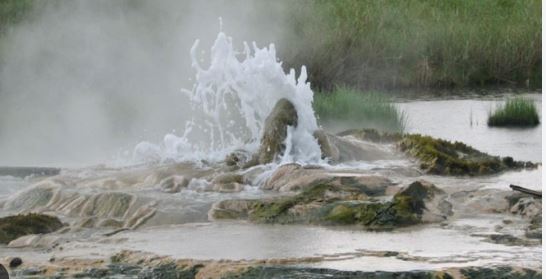Visit Western Uganda: Ankole’s Rich Hotspot
Ankole, in western Uganda, is a region with a rich cultural heritage. It has a truly stunning scenic beauty that has largely gone unobserved by the outside world.
However, the region has begun to attract tourists from all over the world who want
to encounter its splendor and distinctive qualities.
Ankole has quickly become one of Uganda’s most popular tourist destinations. Thanks to its diverse scenery, rich culture, and abundant wildlife.
In this article, we’ll look at some of the best Ankole’s hotspot for visitors looking to
see the best of Uganda’s western region.
A snap shot into Ankole culture
Ankole is one of Uganda’s oldest and most well-known dynasties. It is was created in the early 15th century (Kirundi, G.N.P, 2008). It is located in Western Uganda.
Banyankole are the people of Ankole Kingdom. They speak a language called Runyankole.
Mbarara, Bushenyi, Sheema, Ntungamo, Kiruhura, Ibanda, Mitooma, Rubirizi, Buhweju, and Isingiro districts. These are home diistricts to the Banyankole.
Ankole has two castes: the Bahima (known for pastoralism) and Bairu (for agriculture).
According to the Uganda Bureau of Statistics, this region is and has a population of over 400,000 people.
The region has low poverty levels among its residents. It is home to several top political leaders of the country. This includes; the current Ugandan president’s wife, Maama Janet Kataaha Museveni. Maj Gen Mugisha Muntu, the president of Forum for Democratic Change. Justice Richard Buteera, a justice of the High Court of Uganda.
Aside from that, the region has great natural resources that draw a large number of tourists.
Districts in this region rely on agriculture for food and commercial production. These include; tea, coffee, tea, sweet bananas, and Matooke. These are particularly in Bushenyi, Sheema, and Isingiro.
Ranching beef and dairy farming for milk production are the most economic activities. Particularly in the districts of Ntugamo, Kiruhura, Isingiro, and Bushenyi.
Ankole’s spots
The Karegyeya Rock,
Eibare rya Karegyeya, known as Eibare rya Karegyeya. Located a mile outside of Ntungamo in Karegyeya village.
The rock’s legend incorporates local traditions of the ancient Bachwezi; demi-gods. These took on human form but did not die, instead disappearing into the underworld.
They are the original, traditional rulers of the Kitara empire. This is a likely mythical kingdom that existed in the 14th and 15th centuries. Included parts of modern-day Uganda (including Ntungamo), Tanzania, DRC, Kenya, Rwanda, and Burundi.
The Bachwezi descended from the Batembuzi, a dynasty founded by Ruhanga, the creator. Isaza, the last of the Batembuzi rulers, believed to have married and had a child with Nyamata.
Nyamata is the daughter of the underworld’s king, Nyamiyonga.
Nyamiyonga would later seek vengeance on King Isaza for attempting to deceive him. The deception is about a pact and luring him into the underworld, where he would never return.
The Karegyeya Rock is known to be an entrance to the underworld. Its believed Bachwezi still live there. This is a legend perpetuated by rumours of fires seen at night emanating from the rocks. With ashes and worldly goods scattered around them at daybreak.
A further legend of a giant snake lurking beneath Karegyeya Rock exists to keep locals at bay. And prevent them from further exploring the secrets of the rock.
A snake with such a large belly that it contains a lake. A lake so large that if the rock were ever destroyed, the lake’s waters would break free. And, devastate the surrounding areas, much like a dam breaking.
Kitagata Hot Spring,
Many people believe that these hot springs have healing properties. Masses flock to them in search of healing and miracles. Ekitangata ky’omugabe, one of the springs, is significant. This is because it is to the only spring used by Omugabe of Ankole.
Mulango is another spring named after Uganda’s largest referral hospital, Mulago Referral Hospital.

Nkokojeru tombs
The Ankole’s last two kings buried here: Mugabe Edward Solomon Kahaya 11. He died in 1944. And Omugabe sir Charles Godfrey Rutahaba Gasyonga 11, who ruled from 1944 until his death in 1982.
Other royal family members’ graves got marked by tombstones in this area.
Despite the kingdom being around for a short time, the people of Ankole revere this location. They are in the Ankole region, in the Mbarara municipality.

The Igongo Cultural Centre
Built on the site of Mugabe’s former palace to preserve Ankole’s rich and diverse culture. This is one of Ankole’s cultural site.
Attractions in this area include the Erijukiro museum. This houses cultural artefacts from the region.
Cultural villages in Eitamiro with a clay model of a traditional homestead. It is a complete home with milk gourds. Calabashes. Pounding sticks. Communal fireplace. Hides and Skins. And farming tools.

Itaaba Kyabanyoro
This is the most important cultural site in Ankole. This is because it is where the last king of the Bachwezi crafted the sacred Ankole royal drum. This drum is known as Bagyendanwa.
Itaaba Kyabanyoro is the birthplace of the Ankole kingdom’s founder. This drum was a symbol of power and legitimacy owned by Mugabe in the throne.

The Ankole Long-Horned Cattle (also known as inyambo)
It has a dark brown coat and long white horns that curve outwards and then up, like a lyre.
They are magnificent, elegant creatures capable of traveling long distances. They ate usually in search of pasture and water.
Their horns are very impressive ( six times longer than European cattle breeds). And this breed is still revered in the Ankole community.
They were once thought to be the embodiment of divine beauty, a yardstick for women and worriers.

